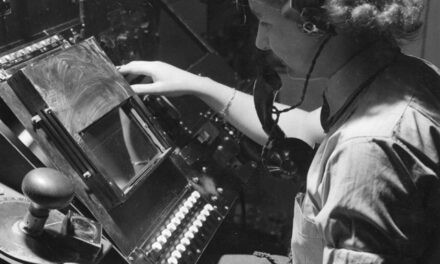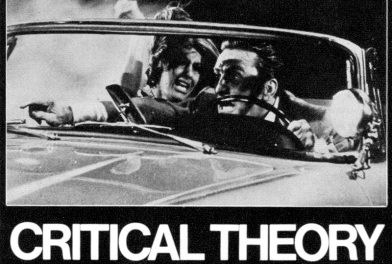I wasn’t going to write another blog about diversity—or the lack of it—in contemporary television. But when Viola Davis became the first woman of colour to win the Emmy for Outstanding Lead Actress in a Drama Series, during the same week that I met our new cohort of students, I changed my mind.

In her acceptance speech, Davis quoted Harriet Tubman before stating: ‘The only thing that separates women of colour from anyone else is opportunity. You cannot win an Emmy for roles that are simply not there.’ She went on to thank those she saw as creating such opportunities through decisions about producing, writing, casting and, in her words, ‘redefin[ing] what it means to be beautiful, to be sexy, to be a leading woman, to be black’. Davis also named other black women who, in taking on such roles, have helped add to diversity of representation. Her main point here—that opportunity is key to creating more diverse representations—applies to gender, race and ethnicity, to sexuality and age, and to those behind the cameras and the production process as well as the actors who bring characters and stories to life. Regular reports and news articles highlight the ways in which the television industry—and media generally—still has to break away from the same stories featuring the same roles and characters.
Admittedly, there are more diverse representations available on television, in the US, the UK and other countries, but these tend to be most apparent in reality TV. Television drama seems more resistant to such changes. Many of the ‘critically-acclaimed’ or benchmarks for ‘quality’ TV drama are still white male dominated in terms of cast and crew: series like Breaking Bad, True Detective, and previously The Wire and The Sopranos tend to deal with issues of masculinity, at times to the near exclusion of female characters and female stories. Prime jobs on such quality drama series, in the US and in the UK, still tend to go to white men with established careers. This is partly down to social capital and employment practices. Big name showrunners still tend to be white men, with Shonda Rhimes one of the few well-known exceptions.
Rhimes is one of those thanked by Viola Davis in her Emmy acceptance speech—the award was won for Davis’ role in Rhimes’ series How to Get Away With Murder.

Understandably, though, Rhimes frequently expresses dissatisfaction and frustration with the praise she attracts for employing a diverse range of creatives and actors (see my previous blog mentioning her DGA award). She is also well aware of how more female-centred series are judged against those male-centric benchmarks of quality drama, noting in a recent interview for Elle that when Scandal won a Peabody award for excellence in broadcasting, some dismissed it as a ‘fluffy’ show that was out of place among more distinguished company.
Moreover, while showrunners like Rhimes receive awards for diversity there is little or no disincentive for others to stop trading on their social capital and hiring friends in similar positions of privilege.

Writer and director Jill Soloway, creator of another Emmy award winning drama Transparent, made this point to Variety.
male creators, showrunners, producers and directors have to really face the immorality, their own immorality, of hiring their friends, of telling male stories, of perpetuating male privilege through protagonism…So that means the male gaze — men as subject, women as object — is business as usual for men to be able to keep telling their stories from their point of view. … (They need to) really offer women the chance to write, to direct, and then to empower them once they are writing and directing, and say, ‘tell your story, tell your story!’
The Directors Guild of America recently called for a revolution in hiring practices, suggesting that rather than employing actors or writers to direct television episodes, producers should seek out new, female and minority directors, for such slots. In the UK, while the BBC continues to espouse diversity, its implicit ‘rules’ about only allowing experienced writers and directors to fill roles on major, high-profile productions means that the privileged position of white, men tends to be perpetuated because not enough opportunities are open to women and minorities.
Soloway suggests that the kinds of stories we see in television drama will change if women (and by extension, minorities) get those opportunities. This might seem like an essentialist position, yet it is not hard to see that someone in a position of privilege might find it difficult to step out of that position and take a different perspective. Clearly many of these critically-acclaimed drama series are enriched by the lived experience of their creators, and debate complex issues about (often white) masculinity with depth and feeling. This may be laudable, but it also tends to maintain such stories as the (invisible) norm, taking centre stage though perhaps ‘supported’ by stories and characters from other positions. Doing something different shouldn’t seem radical, but it often does.
Talking about her role in Paul Abbott’s recent UK police procedural series No Offence, Alexandra Roach admits, ‘This is the first project I’ve ever read with three female leads and I wanted to be part of this new wave… It’s never referred to that we’re three women. That’s just the way it is.’ Thinking about why three female leads in a primetime drama seems unusual when many such programmes have three male leads exposes the invisible norms that tend to operate in the industry.

Thus the lack of emphasis on its three women protagonists in No Offence (which also includes a diverse range of supporting characters) seeks to undermine such norms and establish new models. No Offence also tackles the problem identified by the Bechdel test, whereby female characters often only talk to each other about men. Using the police procedural format and genre the series develops the relationships between the three women, showing female-female mentoring, encouragement, friendship, and solidarity. Its positioning of an older woman, Viv Deering (played by Joanna Scanlan), who does not conform to conventional standards of femininity and female body image, at the centre of the drama challenges several other ‘norms’ that work against diversity. Arguably this is possible because of Abbott’s proven success with long-running series such as Shameless, as well as, perhaps, the way No Offence is liberally laced with humour, using comedy’s subversive tendencies to present its own subversion.
Another new (US) series from the past year, Empire, foregrounds intersectionality in its stories, including and debating racialized, gendered, sexualised identities through its characters, as well as including at least one character with bipolar disorder. I will be teaching Empire on at least one of my television modules this year, and am interested to see how students respond to watching a drama focused on a black family and a hip hop ‘empire’ and featuring a majority black cast.

All of the facets of identity listed above have, of course, been debated and criticised by viewers and television commentators. Surely this is partly what television drama and popular stories are for—to spark discussion about what the stories we tell or the stories we enjoy say about our world? Empire was nominated for only one Emmy, but was dubbed Program of the Year by the Television Critics Association, suggesting mixed reactions to its representations and to its success.
Series like Empire, How to Get Away With Murder, Transparent (and the UK’s new sitcom Boy Meets Girl) are breaking new ground in television representation. At the same time, various groups, institutions and individuals are becoming increasingly vocal about the lack of diversity in the television industry (and other media sectors).One blog post on the Emmys saw much to be positive about from this year’s nominees and winners, and ran under the upbeat title ‘How These Emmy Winners are Changing the Game for Women In Hollywood.’ Yet industry reports as yet record little change, though admittedly such a shift may take time. I recently saw another, less positive, headline on my Facebook feed and read almost the whole of the first paragraph of the article before realising it was a satire from The Onion. Like many of their ‘reports’ the headline was so close to reality it was almost believeable.
So is the glass half full or half empty? Looking around a room full of keen and enthusiastic first year students, many of whom are female, non-white, or present non-conforming gender identities, I have to believe that things are changing for the better. How else will some of these students get the same opportunities as their white, male counterparts? Educators, advocates, and industry groups need to keep this on the agenda so that those opportunities, those roles, and those jobs, are there and are accessible to everyone.
Lorna Jowett is a Reader in Television Studies at the University of Northampton and coordinator of the Cult TV: TV Cultures Network. She is the co-author with Stacey Abbott of TV Horror: Investigating The Dark Side of the Small Screen (2013) and author of Sex and the Slayer: A Gender Studies Primer for the Buffy Fan (2005). She has published many articles on television, film and popular culture, and is currently working on a book about gender in the Doctor Who franchise.






